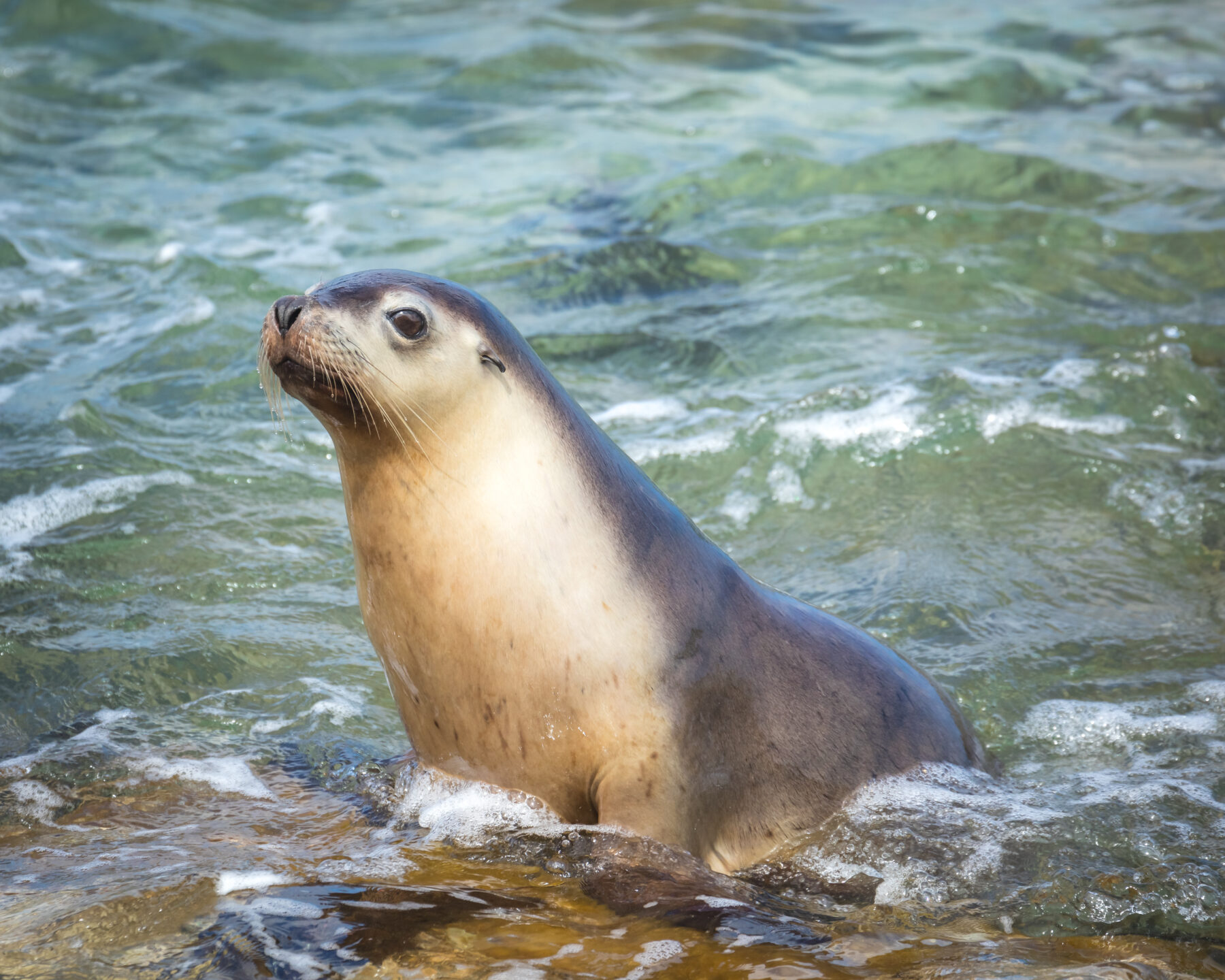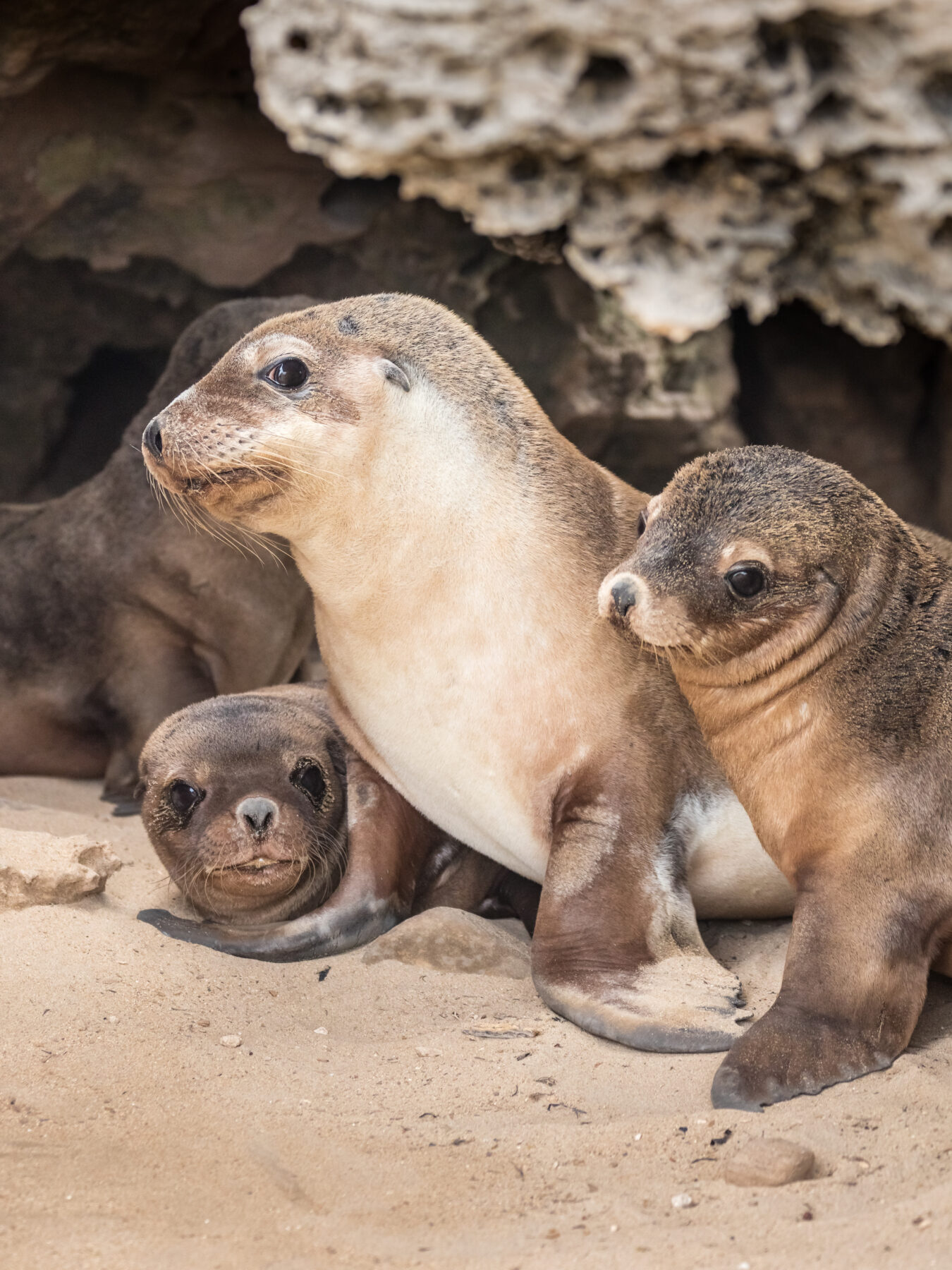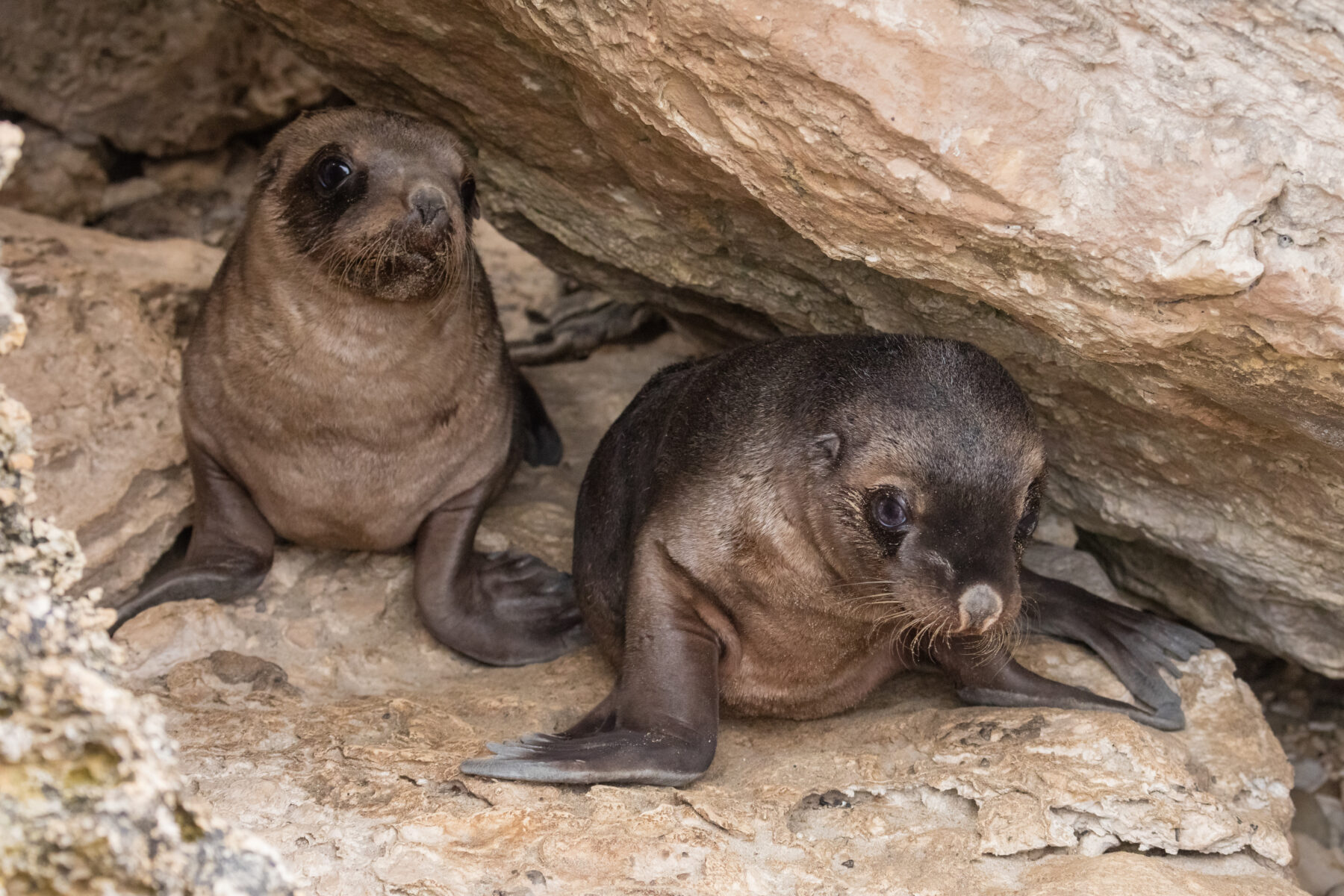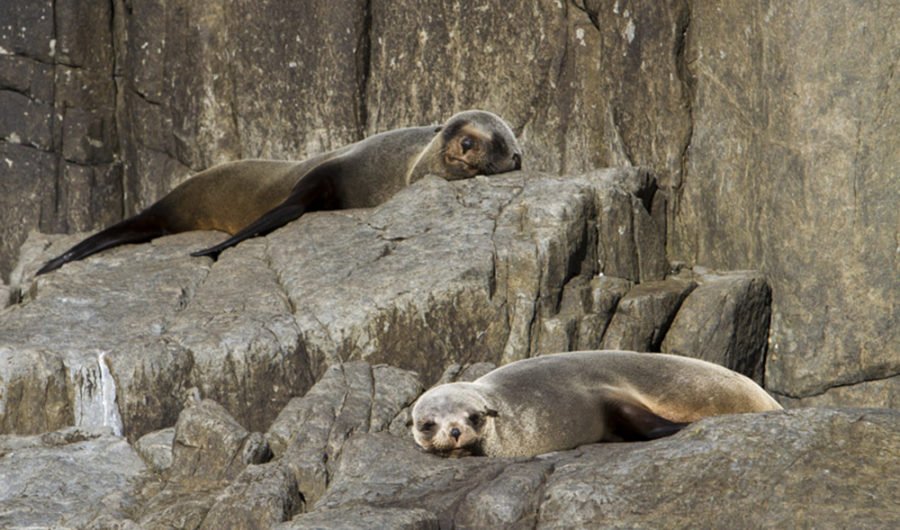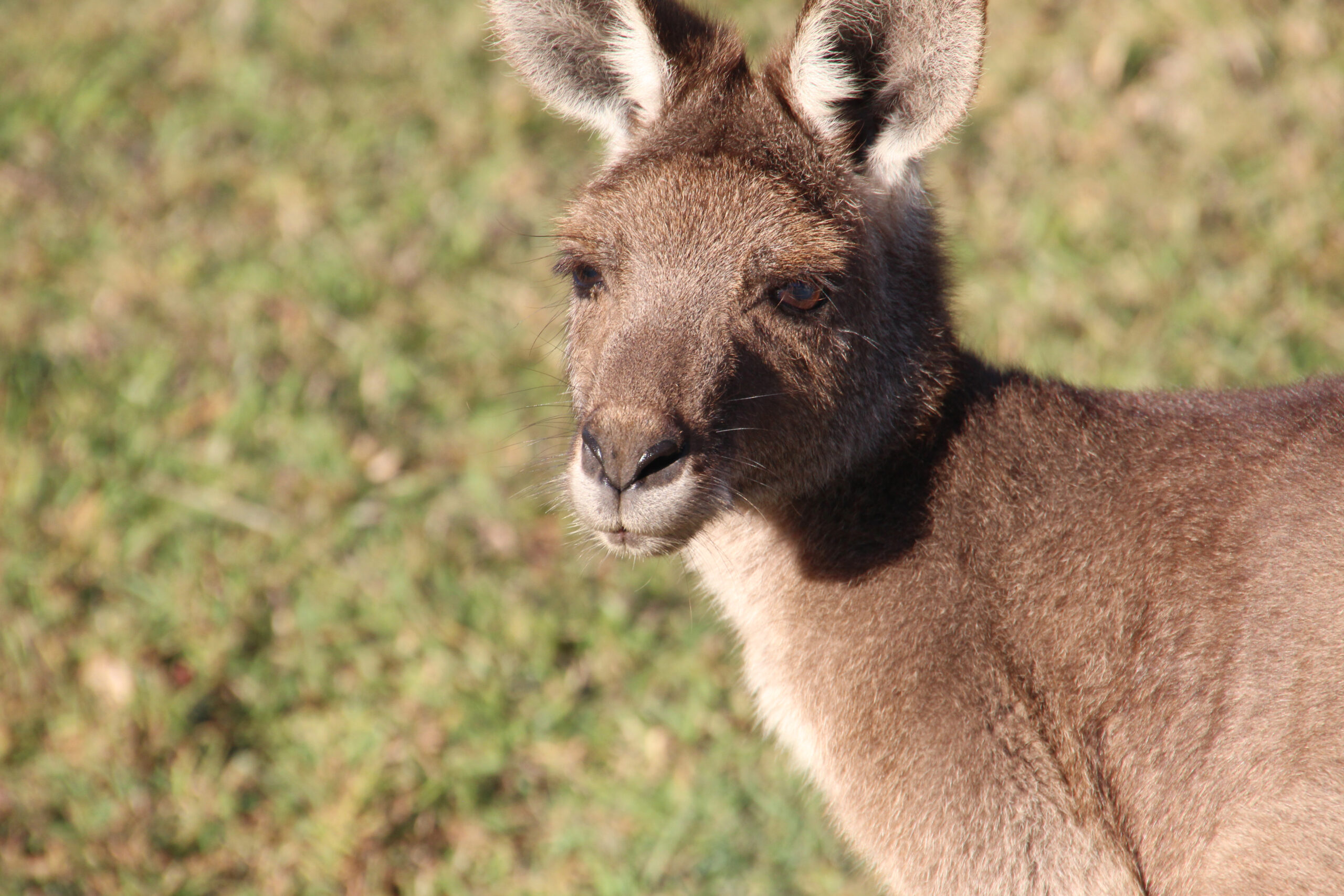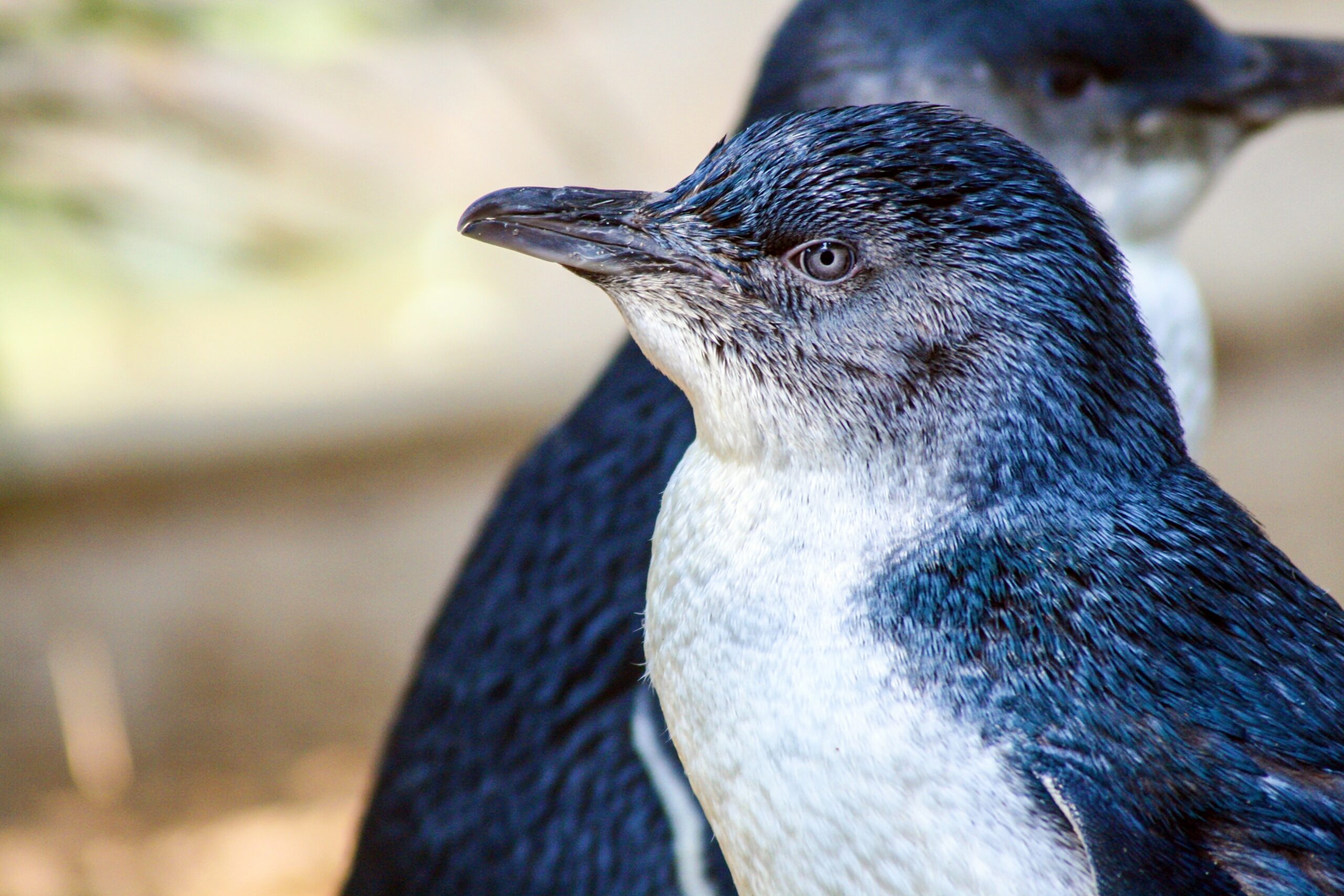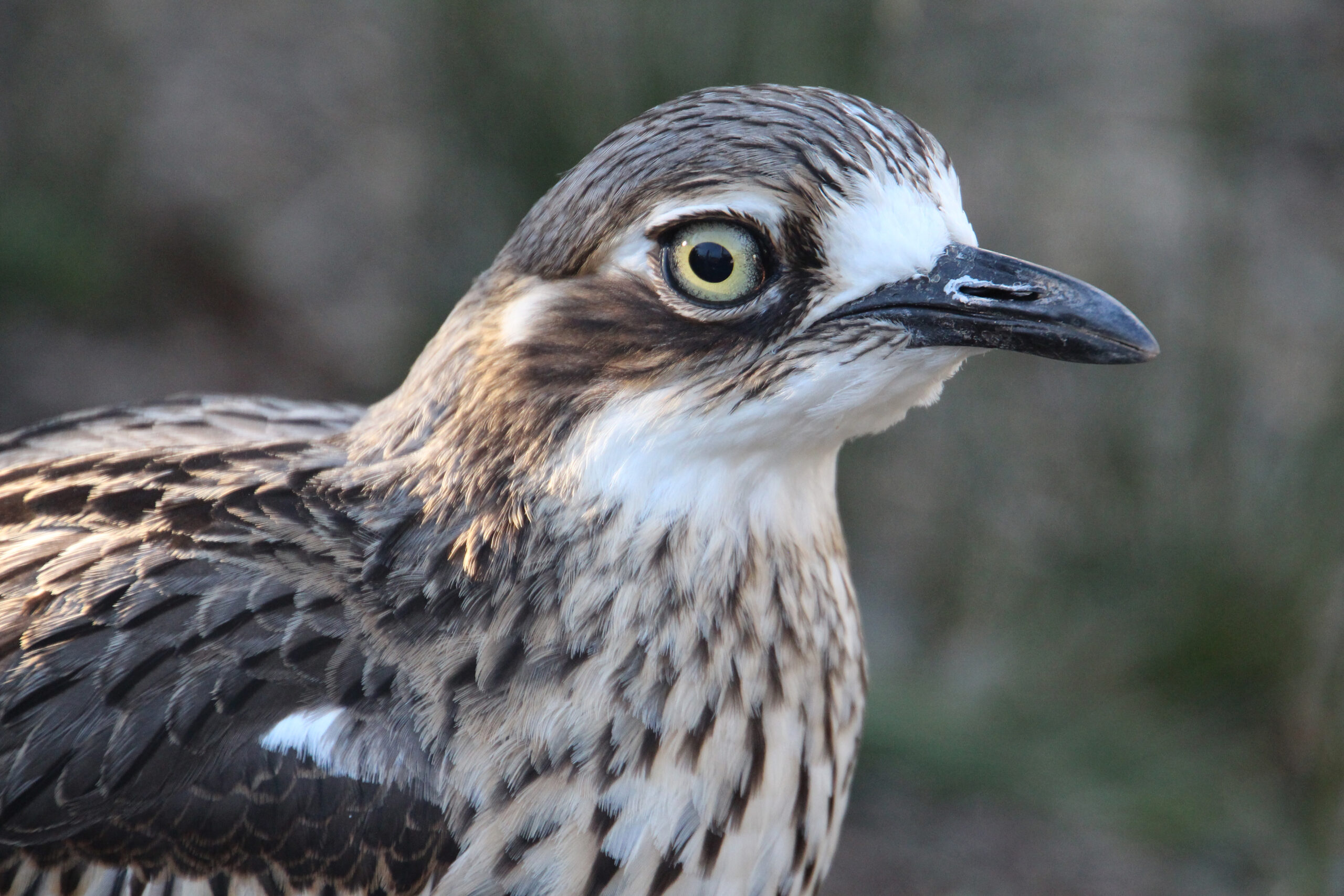| Common name | Australian sea lion |
| Scientific name | Neophoca cinerea |
| Type | Mammal |
| Diet | Carnivorous, eating fish and invertebrates such as squid |
| Average lifespan | Between 17 and 25 years |
| Size | Males grow up to 185-225cm in length, weighing 180-250kg, females grow between 130 -185cm in length, weighing 65-100kg |
The Australian sea lion is inquisitive and curious and is sometimes referred to as the dog of the sea, thanks to its playful nature and barking calls.
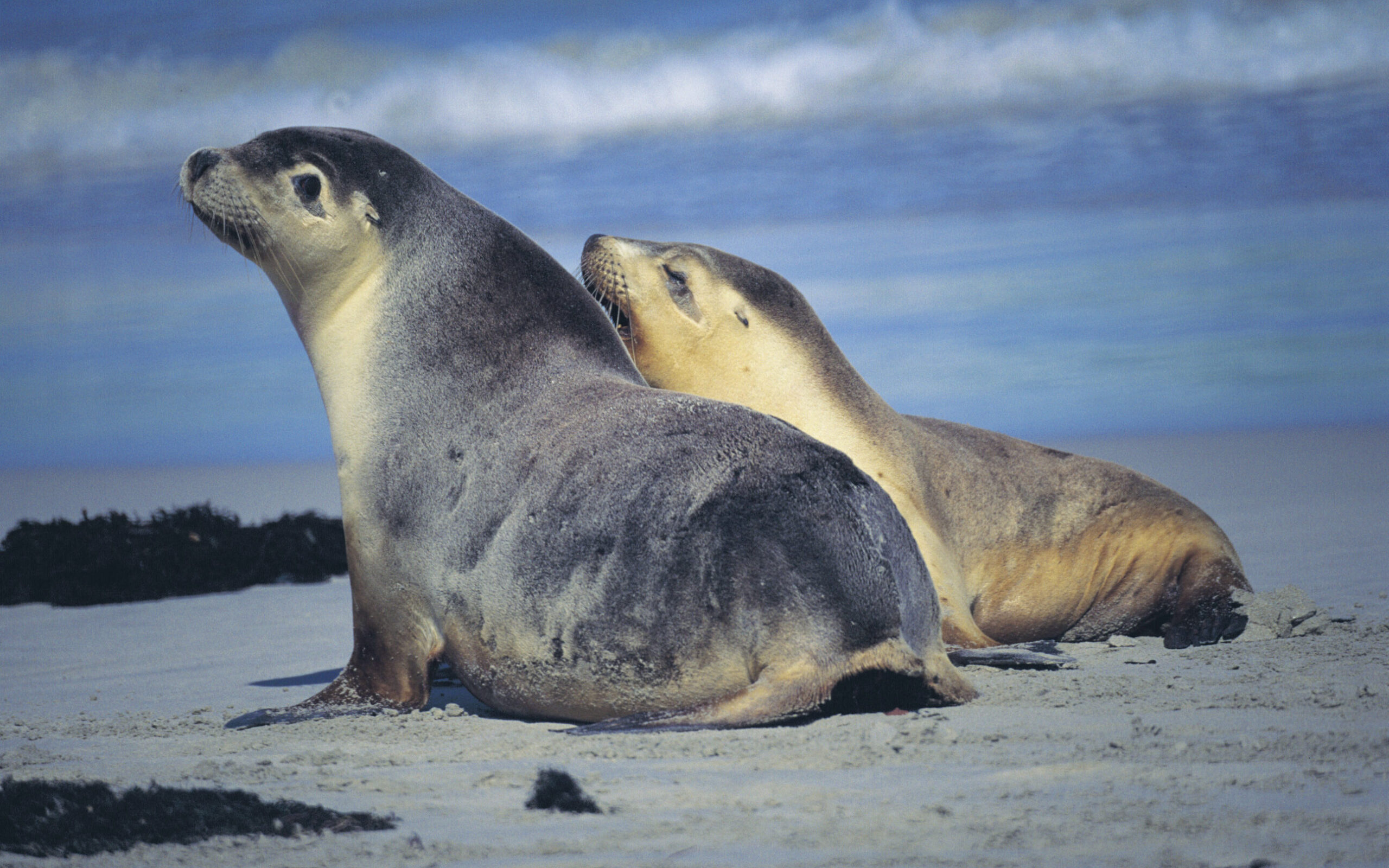
This sea lion is one of the rare two body form species of mammal (sexually dimorphic) with the adult male being up to twice the length and weight of the female adult. They share similar body structures, yet the male and female sea lion have entirely different coat colour, adding to the interesting nature of this species.
With a blunt snout and small, tightly rolled external ears, the Australian seal lion male is dark blackish to chocolate brown in colour with a whitish crown of the head and nape. The female sea lion has a more silvery-grey topcoat of fur and yellow to cream coloured fur below. Pups are covered in a chocolate brown fur which they eventually lose after their first moulting stage.
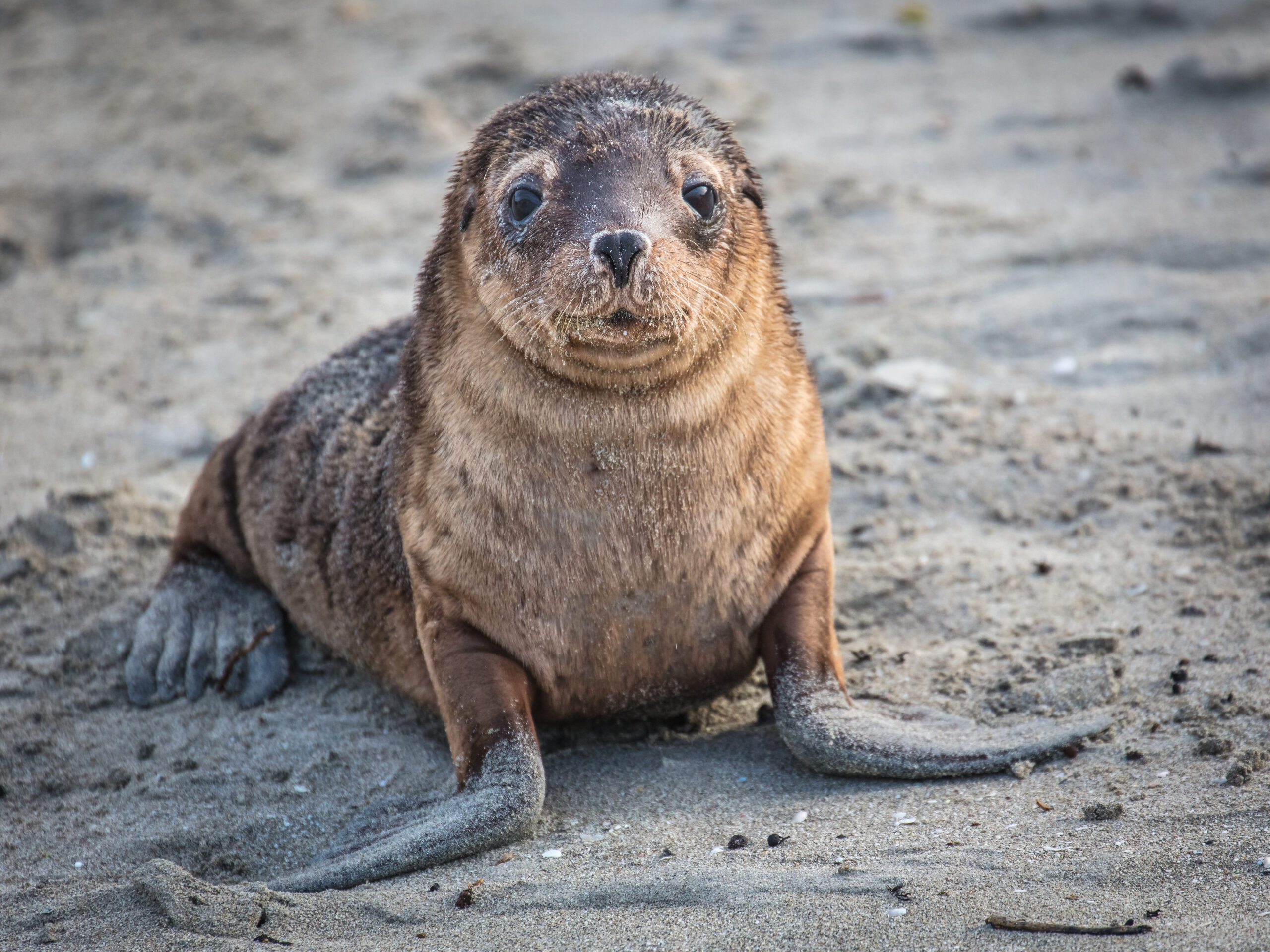
The only seals endemic to Australia, the Australian sea lion breeds on at least 50 different islands off the coast of Western Australia and South Australia. The species has also been recorded off the mainland at Shark Bay, WA, along the New South Wales coast, southern Tasmania, and Victoria. With limited numbers of these animals recorded across population sites, the Australian sea lion is considered rare and under threat. Forty-two per cent of the total known population exist at the three largest colonies and these can all be found east of Port Lincoln in South Australia.
Happily living in a vast range of habitats that serve several different purposes for the animal throughout its life cycle, the Australian sea lion moves around depending on whether it is breeding or non-breeding season or if in need of a haul-out site, where the animal can rest whilst safe from predators. These environments include exposed islands, reefs, rocky terrain, sandy beaches, and vegetated fore dunes, with caves and deep cliff overhangs also frequented by the animal.
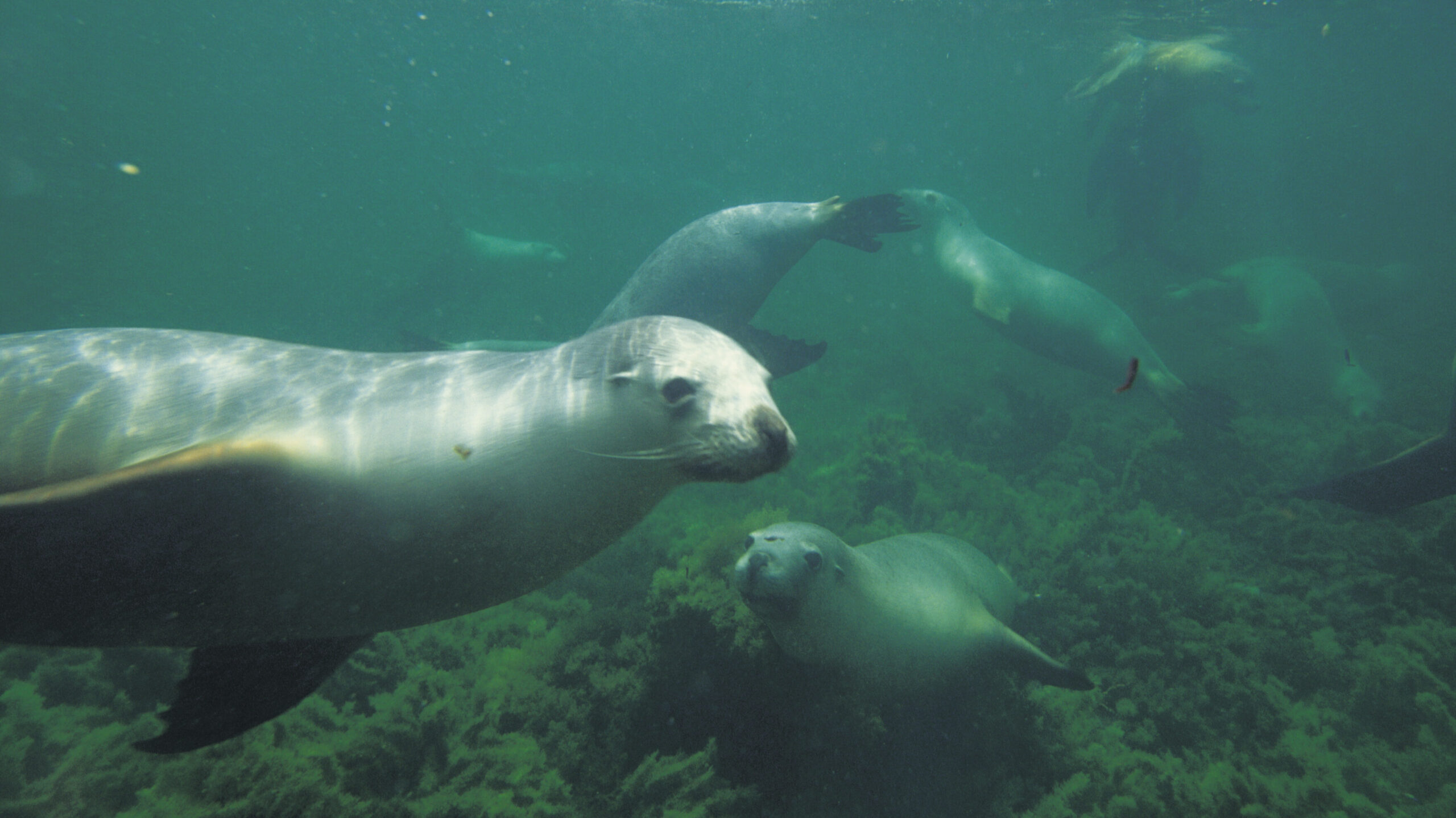
Once hunted for their fur, the status of the Australian sea lion was amended from vulnerable to endangered in 2021 under Australian Law, due to a dramatic decrease in the population numbers over the past four decades. Feeding along the continental shelf, mostly at depts between 20 and 100 metres, the Australian sea lion hunts along the sea floor, dining on octopus, small rays, cuttlefish, sharks, and rock lobsters.
The Australian sea lion is considered unique among the family of pinnipeds (seals, sea lions and walruses) because it has a non-annual breeding cycle and the different colonies of sea lions across Australia also don’t breed at the same time, but anytime between January to June. They also take out the record for the longest gestation period of 14 months, have a long period of around 17 months where mother’s nurse their single pup and females also tend to only breed at the site where they were born. Species mortality is high with only 30% of pups born in any breeding season surviving to maturity because of factors including environmental pressures, attacks by males, disease, and illness.
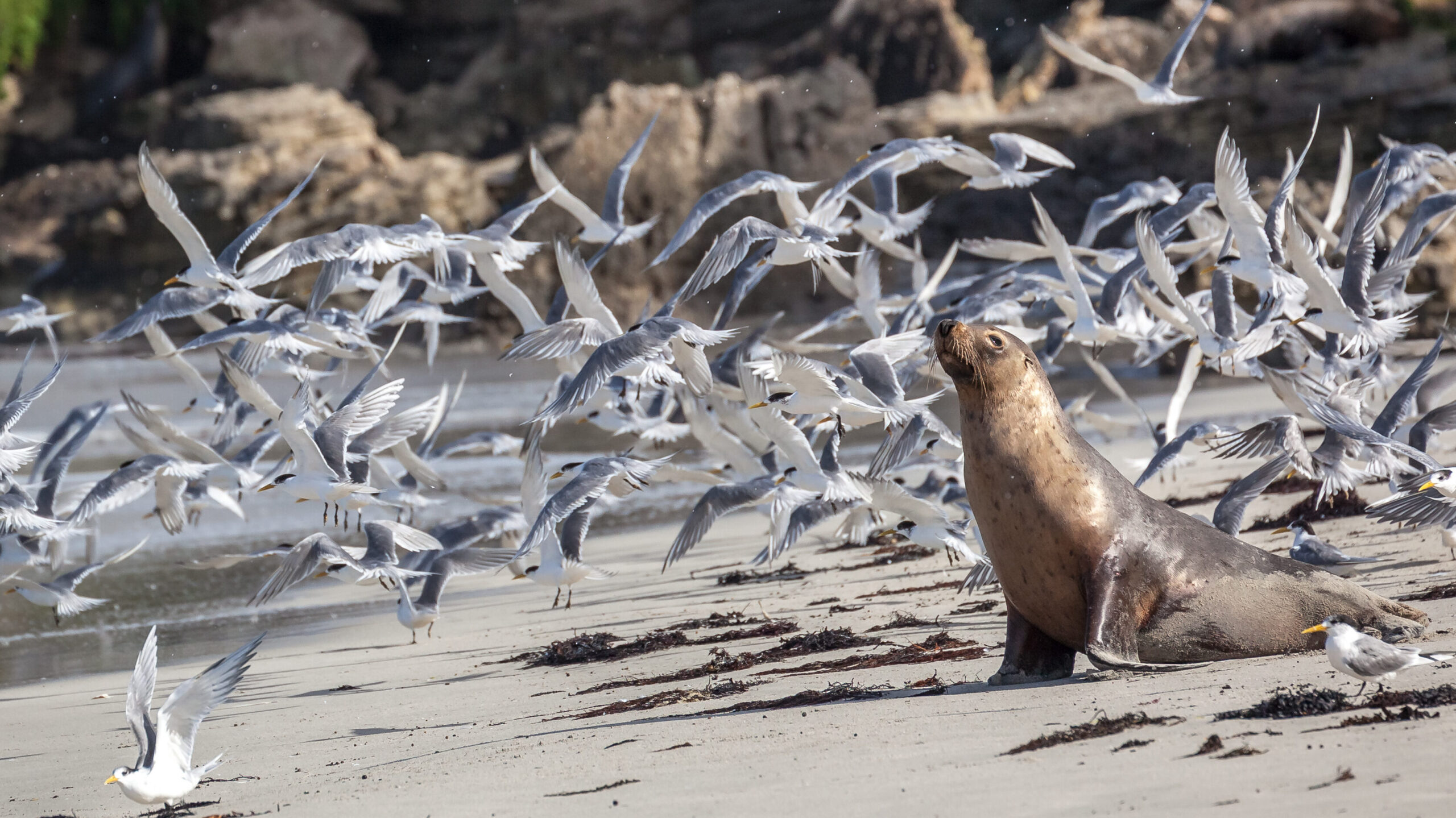
Communicating through a series of growls, clicks, and barks, the male Australian sea lion uses this vocalisation throughout the breeding season to assert dominance. Female Australia sea lions and pups within the species also rely on similar noises as well as scent to recognise each other after the mother returns from hunting trips.
Commercial fishery gillnets currently pose the greatest risk to Australian sea lions, as they become snagged in the thin mesh and drown. Water pollution has also had a negative effect on the species population along with disease and illness.
